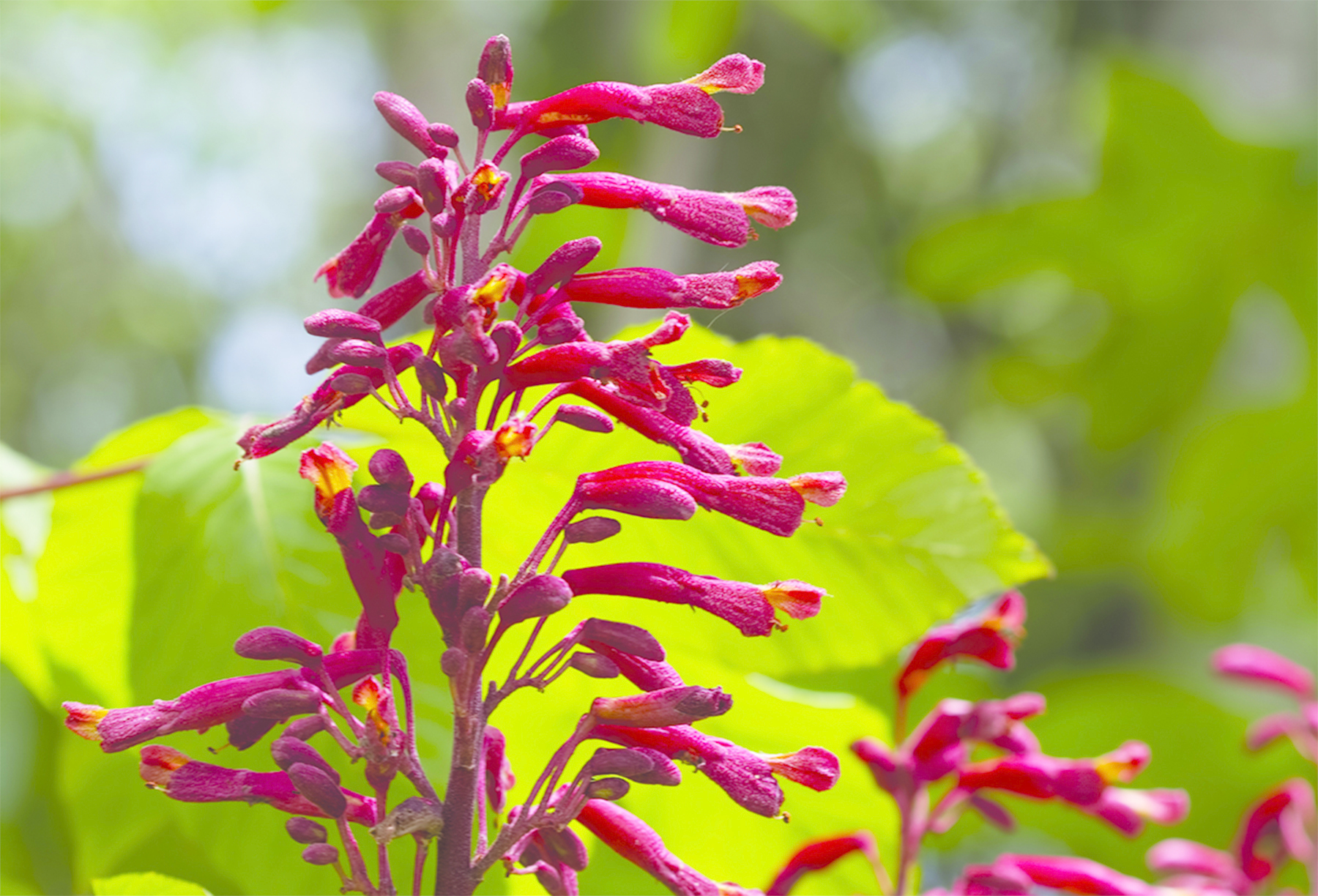The Red Buckeye
THE FIRECRACKER PLANT THAT WILL LIGHT UP ANY SPRING LANDSCAPE

I’m not sure how some plants manage to be delicate and showy at the same time, but the red buckeye (Aesculus pavia) has that down pat. This pretty little native woodland tree makes a lovely addition to the part sun or shade garden. People love the bright coral red spikes of tubular flowers studding the branch tips in mid-spring, and so do your local hummingbirds. Also appealing is the handsome palmate foliage that stands out in the landscape, adding interesting texture and contrast. It’s one of the first trees to leaf out in spring, and the leaves unfurl with subtle reddish tints. The relatively small size of red buckeye is another compelling feature. At 10-20 feet tall and wide, it can fit into most landscapes and lives quite happily under the pines so many of us have in our landscapes.
Red buckeye is probably one of the best of the buckeye/horsechestnut group for our area, performing well and maintaining un-scorched foliage through the heat of summer, unlike some of the other varieties which often achieve a sunburnt look by mid-summer. It has so few pest or disease problems that it has earned the Pennsylvania Horticultural Society Gold Medal, an award only given to the exceptional plants which are tough, disease and pest resistant, and beautiful. That said, and by way of a disclaimer, there’s not much in the way of fall color. In fact, it often goes dormant by the end of summer. Dormant is better than crummy-looking – and one thing you can say about this tree is that it certainly is not crummy-looking, but rather is a beautiful asset to any landscape.
RED BUCKEYE AT-A-GLANCE
– Bloom time and color: April; bright red or coral, and occasionally yellow.
– Size: Grows to 10-20 feet tall and wide; forms an irregular, mounded crown resulting in a roughly cone-shaped outline over time.
– Light: Light shade to part sun.
– Soil: Prefers moist, well-drained soil amended with organic matter. Amend clay with pine bark soil conditioner and composted/bagged cow manure.
– Water needs: Moist to average. Water deeply once each rainless week during the growing season for the first two years. Thereafter, only during dry spells.
– Special features: Early season bloom, attractive to hummingbirds, native, disease and pest-resistant, blooms at a young age.
– Companion plants: Nandina, hosta, pachysandra, and many other shade plants. Yellow-flowering celandine poppies bloom at the same time and would make an excellent underplanting.
Tina Mast
Communications director at Homewood Nursery in Raleigh.
- info@homewoodnursery.com
- www.homewoodnursery.com
- 919-847-0117

